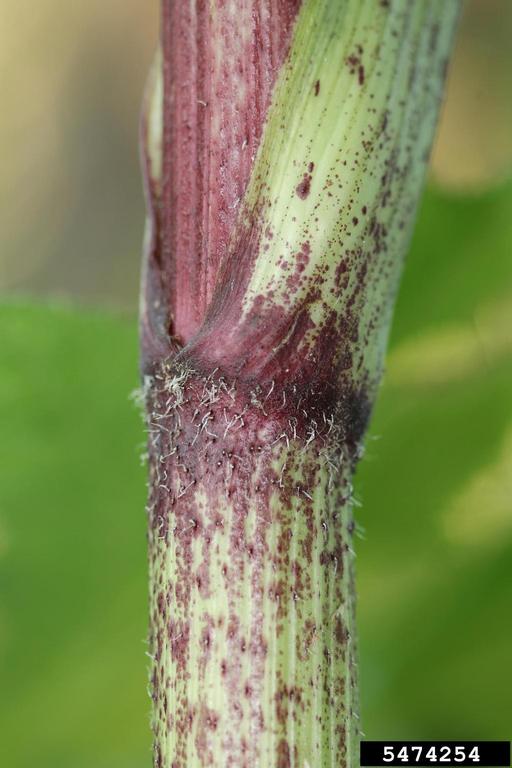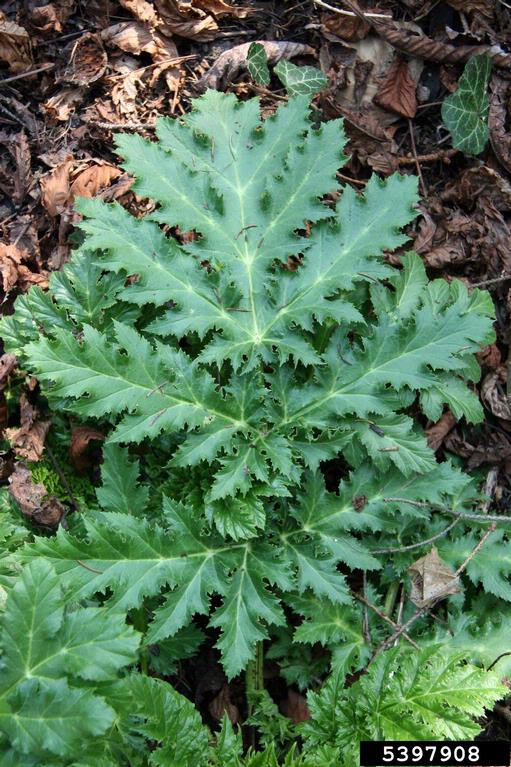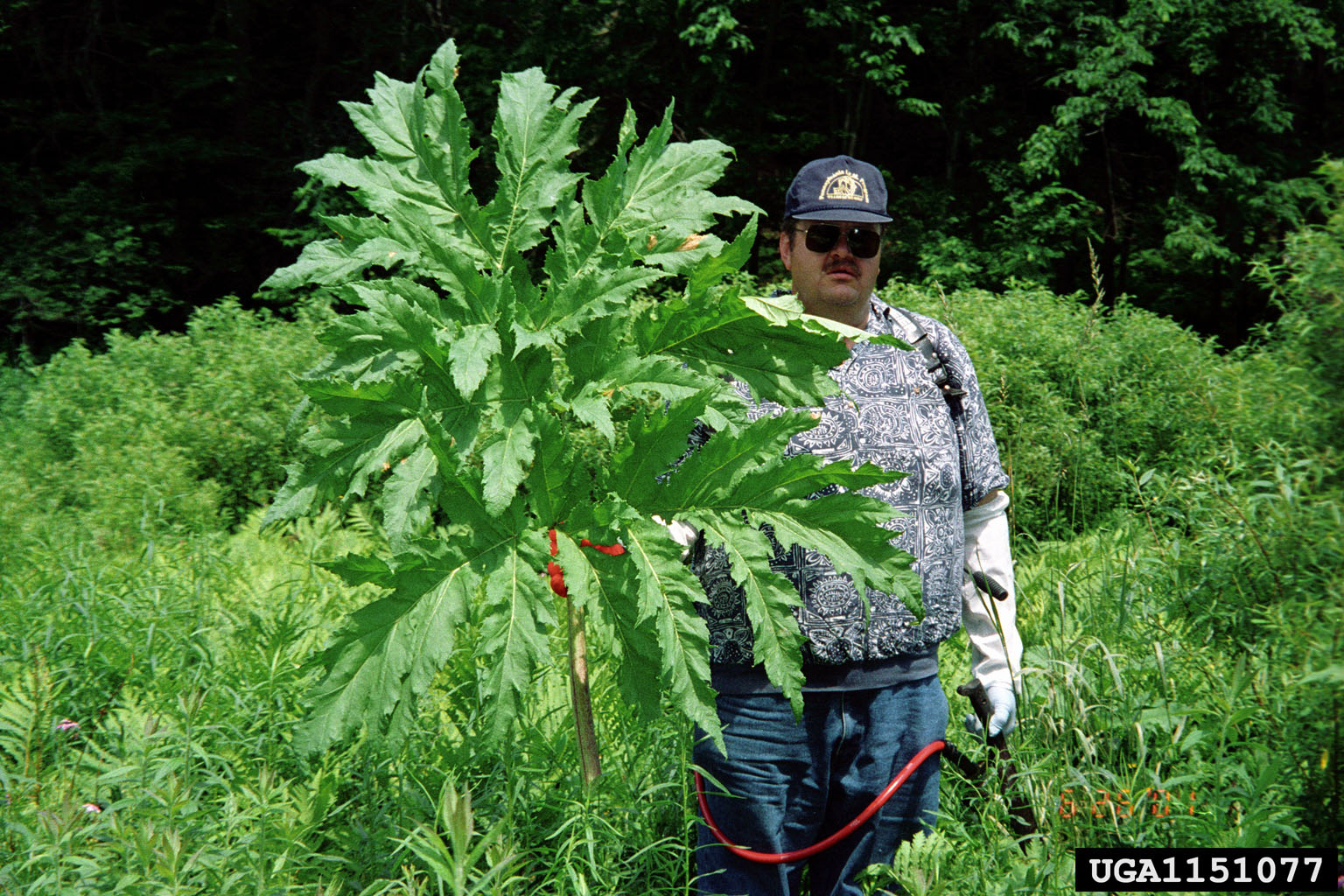If you’ve walked along roadsides, trails, or riverbanks in Vermont lately, you may have noticed tall plants with large clusters of white flowers towering overhead. While impressive in size and appearance, not all of these plants are created equal. Two species in particular—cow parsnip (Heracleum maximum) and giant hogweed (Heracleum mantegazzianum)—often get mistaken for one another.
Cow parsnip
Cow parsnip is a native plant found throughout Vermont. While its size can be striking, cow parsnip is a beneficial part of the local ecosystem, supporting pollinators and other wildlife.
- Height: up to 10 feet
- Leaves: Compound, less divided than hogweed; can be over 2 feet wide
- Stem: Green and rigid with fine white hairs, up to 2 inches in diameter
- Flowers: White flower clusters form a relatively flat-topped shape about 8–12 inches across; 15-30 rays per cluster.
- Skin irritant: Contact with this plant may cause a rash or burn, but the plant tissue must be broken to come in contact with the toxic sap.
Giant Hogweed
Giant hogweed is not widely established in Vermont, making it important to find and report it early. If you think you've spotted it, avoid touching the plant and report it here.
- Height: up to 20 feet tall
- Leaves: Compound, deeply divided with many narrow and jagged lobes; typically 3 to 5 feet in diameter
- Stem: Green with purple splotches and coarse white hairs, up to 4 inches at the base
- Flowers: Umbrella-shaped flower heads that can span over 2 feet across; 50+ rays per cluster.
- Do NOT touch: Contact with this plant causes severe rashes, burns, and blistering; just brushing up against the plant can transfer the toxic sap onto yourself or gear.
Giant Hogweed Images

Giant Hogweed Stem: Green with purple splotches and coarse white hairs, up to 4 inches at the base

Giant Hogweed Flowers: Umbrella-shaped flower heads that can span over 2 feet across; 50+ rays per cluster.

Giant Hogweed Leaves: Compound, deeply divided with many narrow and jagged lobes; typically 3 to 5 feet in diameter

Giant Hogweed Leaves: Compound, deeply divided with many narrow and jagged lobes; typically 3 to 5 feet in diameter
Looking for more photos?
Check out the New York Department of Environmental Conservation Giant Hogweed page.
Photo Credit
Robert Vidéki, Doronicum Kft., Bugwood.org
Leslie J. Mehrhoff, University of Connecticut, Bugwood.org
Terry English, USDA APHIS PPQ, Bugwood.org
Rob Routledge, Sault College, Bugwood.org